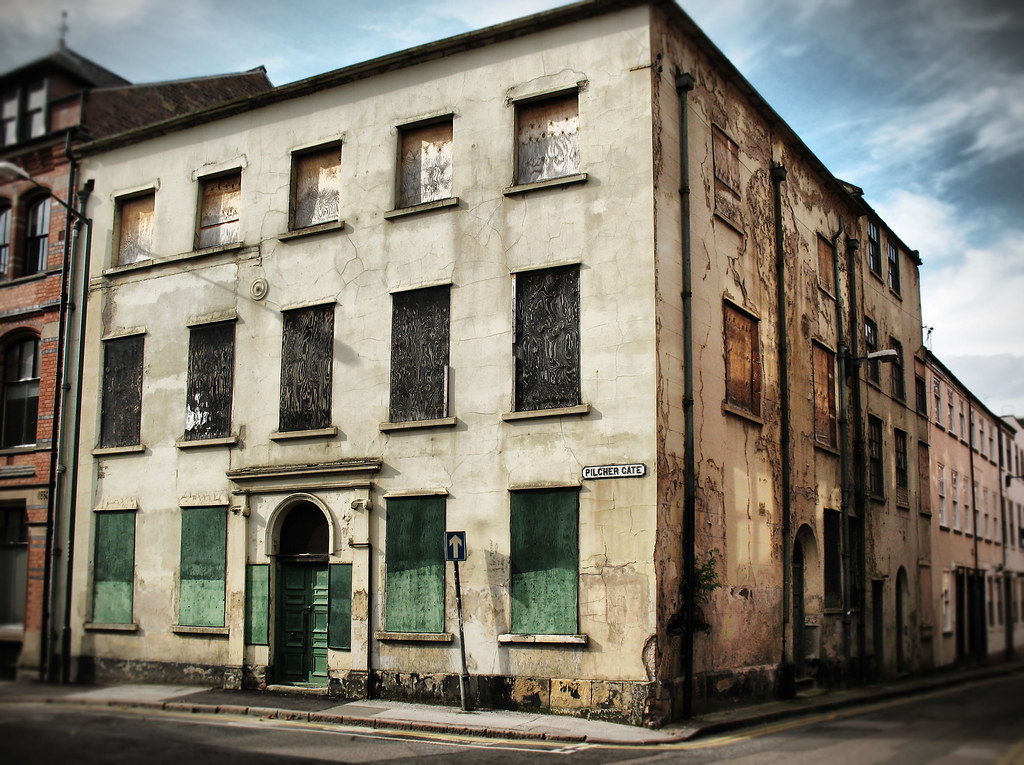Introduction
The address 41 Pilcher Gate has a long history in the City of Nottingham. To this day, parts survive from the original Georgian townhouse, which has been adapted, altered and added to over the 19th and 20th centuries.
The building, which is Grade II-listed is the ‘oldest townhouse in Nottingham’ and was originally built between 1689 and 1699. You can find it in the Lace Market area of the city.
Origins
In ‘The stranger’s guide through the town of Nottingham’, which was published in 1827, the building was described as “a noble mansion of the Sherwins, and the ground on which it is built, is on a level with the Castle-yard”.
The Sherwin, or Sherwyn, family are recorded as residing in Nottingham from the sixteenth century onwards. The family were particularly active in local politics in the seventeenth century. Robert Sherwin was sheriff in 1602 and mayor in 1623, 1630 and again in 1637. His grandson John Sherwin, who was also mayor in 1667 and again in 1716, is probably the Mr Sherwin first mentioned as owning property in Pilchergate.
This is because in historical records of Nottingham, Thomas Bailey states in a journal entry for 1657 that at about this time, the building of several of the ancient large houses of Nottingham was begun – that of Mr Sherwin, “at the top of Pilchergate, who had a fine garden, afterwards made into a paddock, occupying all the ground between Halifax Lane and St Mary’s Place, as far as the Theatre, as likewise another garden adjoining to the house”.
Features
As can be seen, the building itself is in line with traditional Georgian architecture, which is characterised by its proportion and balance; simple mathematical ratios were used to determine the height of a window in relation to its width or the shape of a room as a double cube.
The most common type of Georgian building is the townhouse, like 41 Pilcher Gate, which was vastly popular. These were often speculative builds on 99-year leases, with the original intention that once the lease expired the building would be torn down and the plot re-used. However, this did not always happen and reams of Georgian townhouses still remain, most notably in places such as Bath.
In relation to 41 Pilcher Gate, the feature that has grabbed most people’s attention is the Jacobean staircase – although there were talks of demolishing the building, Hilary Silvester, Chair of Nottingham Civic Society said; “The main thing that saved it was its Jacobean staircase – it’s an important building in a historic part of Nottingham.”
The staircase is described as being by far the best preserved seventeenth century staircase to survive in any building in Nottingham, in fact it is almost certainly the only substantial staircase to survive in the town from any period prior to 1700.
The building is constructed of small size handmade bricks that appear to be resting on a timber frame. There is a serious crack in line with the drainpipe.
The Decline
Over time, the physical portions of the house could not grow with the evolving area around it. The gardens were eventually built upon as the surrounding area became more commercial, and then an industrial part of Nottingham. After that, 41 Pilcher Gate then changed from being a residential property to be a lace warehouse.
At that point in time, Nottingham’s lace trade was booming, but the building soon became vacant when trade began to decline at the end of the 20th century.

At Present
In 2016 it was revealed that the townhouse would be brought back into use after being derelict for more than 20 years. The building was to be redeveloped into luxury apartments and offices.
Developments have started but have not yet been completed since the work started – however we will watch this space and look forward to Nottingham’s oldest townhouse finally being completed and to be in use once again.









